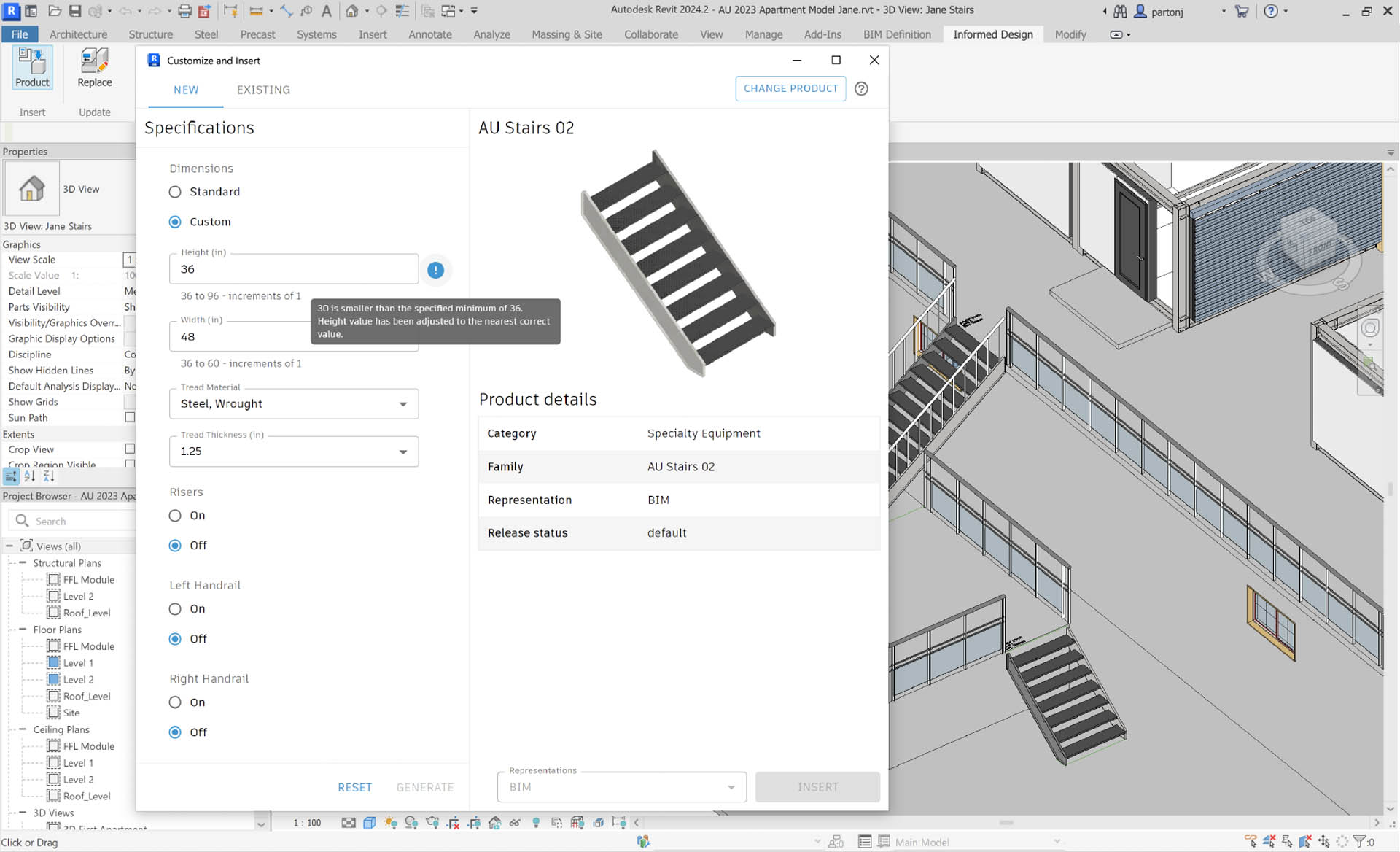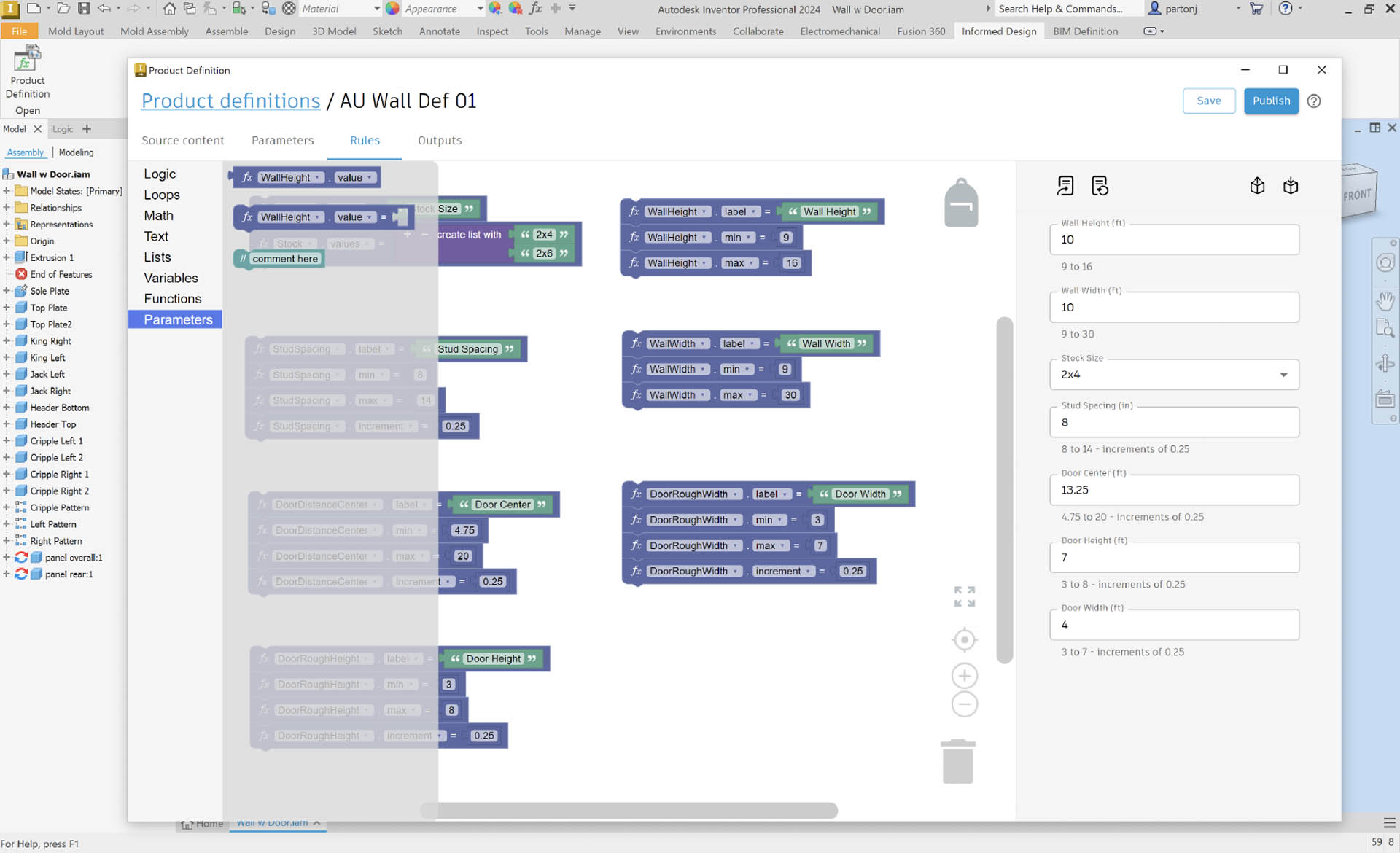Connecting fabrication software to BIM software, that is designed to primarily to create documentation, is not as easy as you might think. Autodesk, with software in both camps, has had many attempts before. Under a new initiative the company is now connecting Revit and Inventor via the cloud. Martyn Day reports
If you go by the sheer number of off site housing fabrication bankrupt cies, closures and turmoil, the purveyors of MMC (Modern Methods of Construction) have had a pretty shocking past eight years. Given that the UK has a chronic shortage of housing and construction labour, and a record number of building contractors going out of business, it’s astonishing that the one process designed to overcome these constraints – building offsite – has so utterly imploded, burning hundreds of millions of dollars in investment along the way. The amount of capital required always seems to be underestimated and the factory space acquired before the workflows or technologies have been fully worked out.
Reflecting the fractured and fragmented problems that face the industry, BIM and mechanical CAD (MCAD) grew up in different parts of the city. BIM tools like Revit build models to produce drawings, which then get handed onto contractors to be built manually. MCAD creates solid models of parts, which are contained in assemblies, which then generates Gcode to drive various fabrication machines, cutting metal or wood, or for output to 3D printers.
Both types of tools were developed independently of each other and paid little heed to the file formats or user-bases of each discipline. That is until manufacturers of fabricated components in buildings, such as MEP, wanted to be driven by 3D models, and offsite housing fabricators wanted to build from data created in BIM tools.
While BIM software is 3D, it does not have the same level of detail as fabrication-level assembly data in MCAD and herein lies the chasm to cross.
To get data out of Revit and into Inventor, Autodesk’s leading MCAD tool, Autodesk initially added SAT file capabilities to Revit. (N.B. SAT is a 3D model format used by ACIS-based MCAD modelling software). Then RFA (Revit assemblies) were added to Inventor as an export.
However, the workflow to use and create RFA was a six/seven stage process: open > simplify geometry > use specific tools to create geometry with special connectors > position the UCS > add the metadata and omniclass tags > export and import into Revit.
These file-based transactions were an inhibitor. Then Autodesk invested in doing the reverse and in Revit 2021 data could be exported as a reference to Inventor using the AnyCAD technology.
In the 2022 release, Inventor got RVT export and, in 2023, the concept of Data Exchanges meant portions of the files could be shared, but not the whole RVT project. Exhausted yet?
One can’t say Autodesk didn’t put the effort into trying to tie Revit and Inventor together and it seemed to be gaining traction in the small but growing industrialised construction sector.
However, since the 2023 releases there seems to have been a pause on this development and a rethink on the strategy of doing industrialised construction.
Find this article plus many more in the March / April 2024 Edition of AEC Magazine
👉 Subscribe FREE here 👈
A new approach
In February 2024, Autodesk announced ‘Informed Design’, which is a new take on connecting Revit with Inventor. This is more of a combination of workflow strategy and technology. At the heart, Revit and Inventor connect via the cloud but, prior to starting a project, work is required in creating pre-defined building products in each application, giving the impression of a bi-directional digital thread.
The upfront work requires the users to componentise the manufacturable elements of a building and create those in Inventor, producing a library or family of customisable parts or assemblies using AEC-specific templates.
These are then loaded to Autodesk Construction Cloud (ACC), and then made available as Revit families. These Inventor AEC families allow parametric editing, materials, and build corresponding BoMs (bills of material).
With this active substitution connection, Revit designers build not only the architectural model but simultaneously create a model of fabricable 1:1 components in Inventor.


While the chasm remains between Revit and Inventor, Autodesk has introduced a kind of fabrication modelling by proxy. As the predefined Inventor parts and assemblies include the constraints of what can be manufactured, the architect is forced to design within the boundaries of fabrication reality. This is an intriguing solution to a historical problem.
The downside of this approach is that there is significant work to be done upfront in the fabrication definition of every fabricable component or system. Pre-work is required in Inventor, which is arse about face to the way the process works today.
For very organised multi-discipline firms I can see this burden paying dividends, especially as the library of components defined in Inventor grows. However, in the typically fragmented AEC space, the level of pre-coordination and investment would certainly be a challenge for many.
Conclusion
Autodesk and the industry are on a long and painful industrialised construction journey. There is no doubt that there is convergence and there will be increasing pressure to cohabit the same design space and fabricate with the most modern methods.
As it stands the software applications that are used to do this were never intended to work together and so workarounds have to be sought. Lobbing the data over the wall between applications was the first attempt. But trying to apply brute force to data that doesn’t sit comfortably outside of its original environment, and comes with overheads, is essentially a form of design puppetry, operating two systems through proxy substitution. Informed design is a more intellectual approach.
One has to wonder if just designing in Inventor is the way to go. Dale Sinclair, head of digital innovation at WSP has been an advocate of the Inventor route since his days at AECOM, where Inventor allowed him to speak the language of the offsite fabricators and model at 1:1.
Sinclair will be speaking on this strategy at AEC Magazine’s NXT BLD conference on 25 June 2024 at London’s Queen Elizabeth II Centre.
There are other options routed in MCAD, such as Dassault Systèmes Catia which has been used in high-end projects by ZHA, SHoP and Gehry. But traditional BIM and MCAD tools, even from the same vendor seem to sit together as well as oil and water.
Autodesk’s Informed Design in some way respects that but I don’t think this will be the industry’s final attempt at integrating the two worlds. While its obvious that different disciplines need different tools, if there is a fresh reimagining of CAD, does there still need to be different formats for each? For now, that’s what we are dealing with. The future may see a more unified database with less need for parlour tricks.
The current sorry state of offsite construction is unfortunately not going to help drive this. At some point, someone, with deep pockets, is going to make this work. Labour shortages will not improve and hundreds of thousands of quality houses need to be quickly erected to increasingly sustainable constraints. To hear about that, come to NXT BLD to hear from Bruce Bell of Facit Homes who’s got a plan to upscale residential on-site fabrication.







